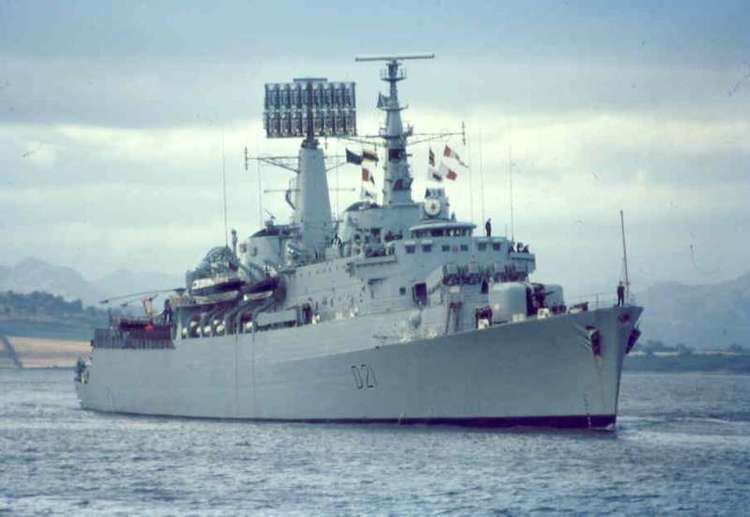Name HMS Norfolk Laid down 15 March 1966 Decommissioned 1981 Construction started 15 March 1966 Length 159 m Draft 6.1 m | Ordered 5 January 1965 Commissioned 7 March 1970 Launched 16 November 1967 Weight 5,538 tons | |
 | ||
The fifth HMS Norfolk was laid down on 15 March 1966 by Swan Hunter and launched by Lavinia, Duchess of Norfolk on 16 November 1967. She was commissioned on 7 March 1970. Like her predecessor, she was a County-class warship.
Contents
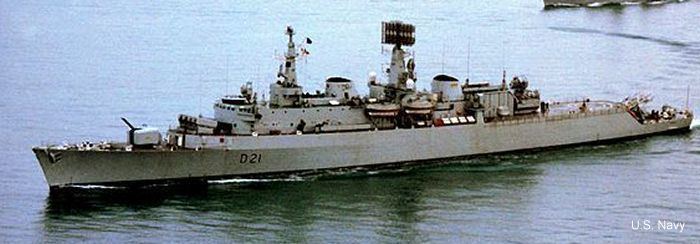
Design
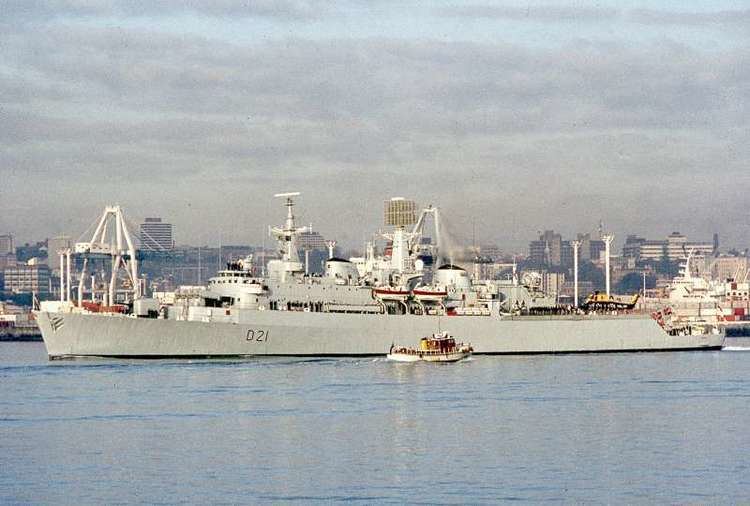
Norfolk is described as a destroyer, rather than a cruiser, because the Royal Navy and First Sea Lord Earl Mountbatten had seen guided missile destroyers as easier to gain approval from the Treasury than cruisers, when the class originated in the late 1950s. By the late 1960s the armament being fitted to Norfolk was dated and limited with no more than the guns of a mid-1950s destroyer and a supposedly improved Sea Slug missile, a questionable innovation, untested at the time work on Norfolk started. By the mid-1960s Defence Minister Dennis Healy and the Labour Government were withdrawing Britain from a global defence role and rejecting the idea of broken back conventional or limited nuclear war in the Atlantic. The Healy Labour defence doctrine was one of tighter nuclear deterrence with the main armament, tactical nuclear and anti-submarine emphasis. Norfolk didn't really fit the strategy and was built to keep shipyards open, and as a low level cruiser for low level defence, diplomacy, third world bush fire wars and recruitment. Eventually such ships could be sold to the third world to aid British interests in South America, the Middle East and Asia where Britain was withdrawing its own forces.
Royal Navy service

Norfolk was first commissioned on 7 March 1970 and was present at Portsmouth Navy Days. In 1972 Norfolk began a refit to replace 'B' turret with four Exocet launchers. She was thus the first Royal Navy warship to be armed with the Exocet missile system. She also became the first warship to carry three independent missile systems: Exocet, Sea Cat and Sea Slug. Norfolk recommissioned in 1974. She had a displacement of 5,450 tons and was quite a large ship, considering she was classified as a destroyer. She undertook numerous deployments to the Indian Ocean, Mediterranean Sea and South Pacific Ocean. By the mid-1970s it was clear that the Mk 2 Sea Slug did not represent a significant improvement over the earlier version, because it was even less reliable and attempts to develop successful sustainer motors had failed. There was only money to fit new computer command and control to the three other second group County class, so Norfolk was reduced to increasingly marginal and third line roles.
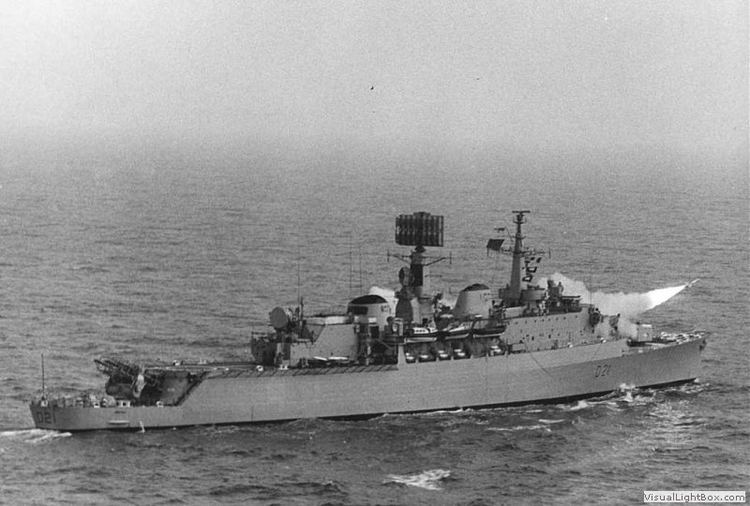
In September 1976, one of the highlights of her relatively peaceful career came, when she flew the Queen's Colour in Sweden and King Carl XVI Gustaf unveiled a plaque to commemorate the British Admiral James de Saumarez. During the ship's visit to Fremantle, Australia in 1979, she had an unwelcome milestone - she became the first warship afloat to hold a Court Martial in over 10 years. The visit itself was made to commemorate 150 years of the founding of Western Australia.
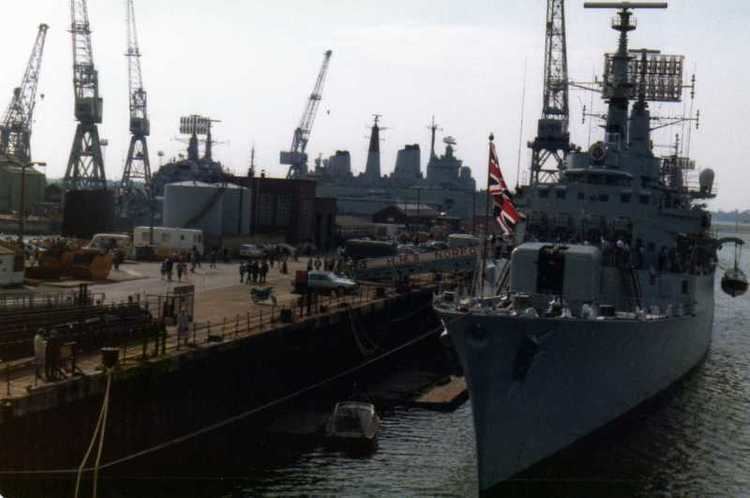
In September 1976, Norfolk took over the UK's commitment to Standing Naval Force Atlantic. She decommissioned in 1981 to become the Dartmouth Training Ship. Now of marginal naval value in the North Atlantic, even the Exocets being a light short ranged missile compared with the Soviet counters, Norfolk was inevitably a candidate for early pay off for third world or Commonwealth sales and was first offered, to New Zealand about the start of 1981. Its main selling point was seaworthiness, good range and current data links to both the RN and USN.
Chilean Navy service
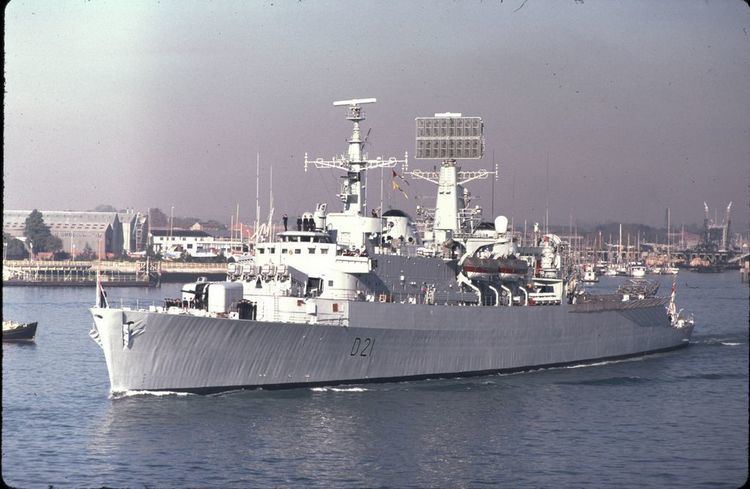
Norfolk was sold to Chile on 6 April 1982 and renamed Capitán Prat, after Arturo Prat, commander of the Chilean ship Esmeralda during the War of the Pacific. In 1996, her Sea Cat launchers were removed and she was fitted with the Barak SAM. In 2001, her Sea Slug system was removed and she was refitted as a Helicopter Destroyer with a Cougar attack helicopter.
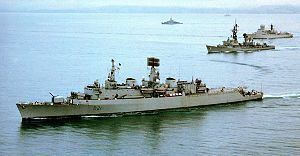
On 24 February 2006, Capitán Prat was laid up; she was decommissioned on 11 August 2006. In September 2008, she sailed to Mexico for scrap.
Publications
